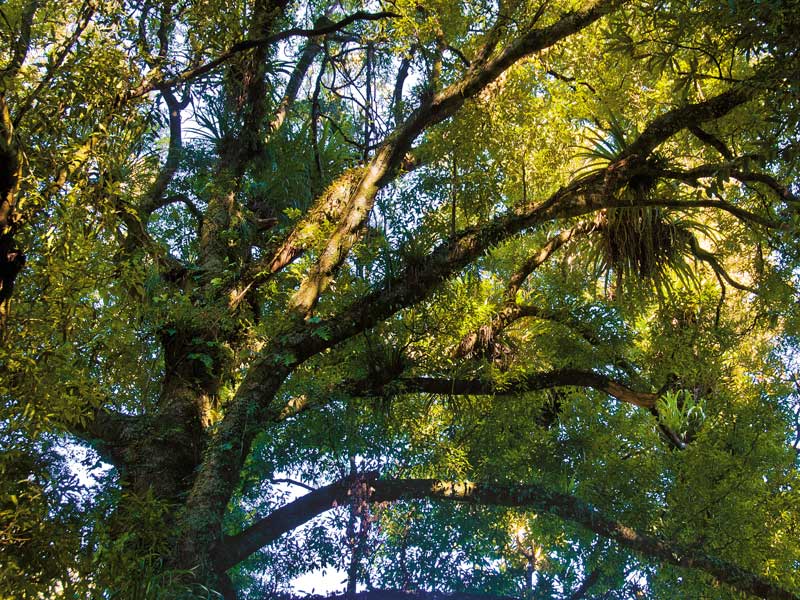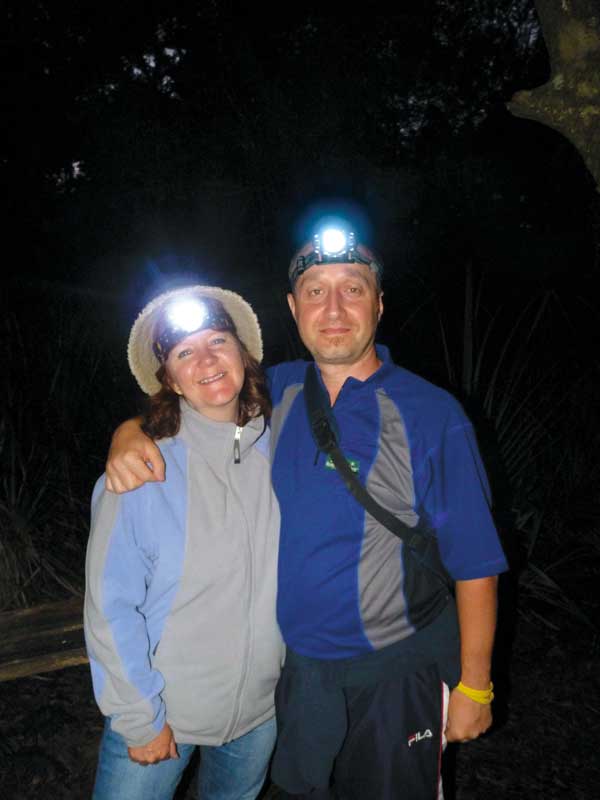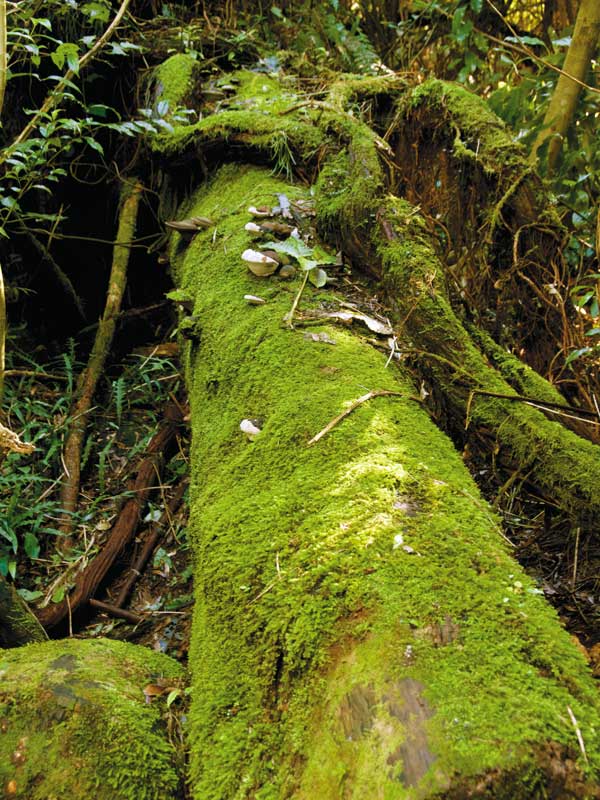Ian and I squelched across two paddocks to reach the rim of the forest. Clouds hung dark and low but there was enough light to see into the deep valley stretching away to the north, which gave us some idea of Puketi Forest’s 15,000 hectare-reach.
Barbara and Ian Candy live on its edge and have been guiding people through the wild tangle of kauri, podocarp and hardwood trees for the past 15 years. They’d offered to take me on the ‘Combo’, a guided walk that gives a day/night insight into the forest’s flora and fauna.
We parked the caravan in the designated paddock where we would later spend the night. At five o’clock, Ian led the way to the park’s entrance. The party was small, just five counting Ian, which made for light footfall and little chatter.
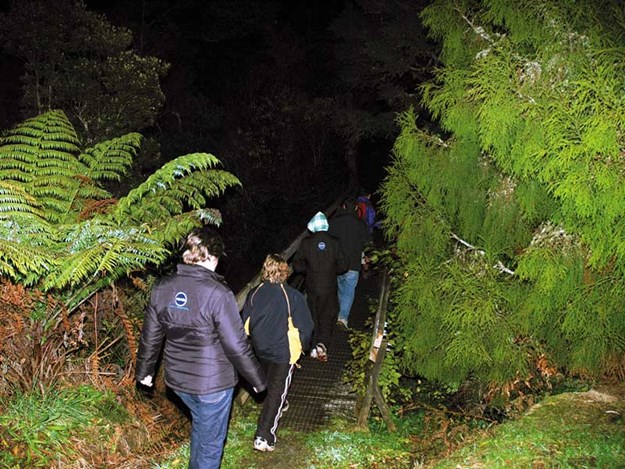 |
The group setting off to discover what lurks in the darkness |
Already we had thoroughly scrubbed our footwear to deter the spread of dieback, the kauri killer, a nasty little pathogen that has not yet invaded Puketi. Touch wood! The forest is one of the most diverse in New Zealand, supporting hundreds of species of indigenous plants, birds and insects.
I was relieved to learn that the four-hour tour would not be a survival hike – more like poking about to see what we could find. This turned out to be more than I thought.
As the great forest enfolded us, a burst of rain drummed on the leaves and raindrops trembled from the branch tips of young rimu trees. The air smelled of damp leaf mould.
As we walked, Ian pointed out the treasures of the forest: the fruiting trees and flowering rata; mamaku ponga trees that grow to nine metres; flowering epiphytes; delicate mosses; filmy ferns and magnificent stands of ancient kauri.
We watched a group of kereru and a charming little North Island robin. After two hours, we rested and ate some delicious muffins baked by Barbara. Evening was coming on and shadows flickered like sprites through foliage that shivered at the command of a light breeze.
The fluting notes of tui, the last birds to settle, called out the creatures of the night. A morepork landed on a tree overhead, announced its presence with a few croaking cries, and then left as silently as it had arrived.
“Could see a bat if we’re lucky,” said Ian. “Often about dusk.”
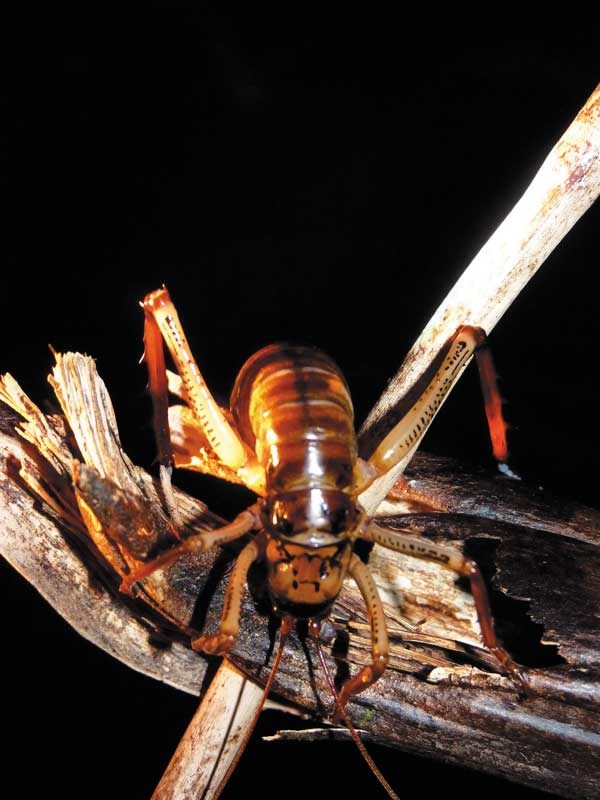 |
Giant cave weta can leap up to two metres |
We moved deeper into the woods. Above us native orchids sporadically appeared, hanging like bunches of popcorn. Our torchlight started to pick out the creatures – first a cave weta clinging to the bark of a tree, an elegant invertebrate, with long hind legs and longer antennae that it uses to feel its way through the foliage. Wetaphobics beware; propelled by those slender hind legs weta can cover two metres in a single leap.
I’m okay with weta but I’m an advanced arachnophobe, and so it was with fascinated horror that I examined the next critter – an outsized sheetweb spider. Although I didn’t measure this, Ian told me that a sheetweb’s body length is around 25mm. It spins a thick web, up to one metre in length, slung between two branches like a hammock.
Beneath the web, the spider waits and pounces on its prey from below to deliver the coup-de-grace with its impressive-looking fangs. Scrambling behind Ian, I clambered over wet logs through what was probably a whole city of sheetweb spiders.
We came to a creek bed where we spotted a trio of luminescent, dark-green koura (crayfish) skulking around the rock pools. On the bank we spied a hunting spider with a tiny beadlike body and hair-thin limbs. It legged away behind a tree trunk when it saw our torchlight.
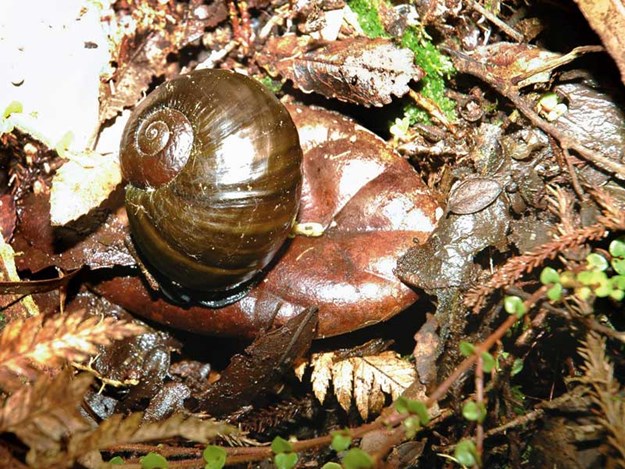 |
Kauri snails are the largest in New Zealand |
The highlight of the night was the discovery of two kauri snails. On their nocturnal manoeuvres, these large night wanderers hoover up slugs and smaller snails. Despite such unlovely habits they are attractive creatures with shiny green shells and blue tinges to their ‘feelers’ and ‘tongues’. They are New Zealand’s largest snail, big enough for a French chef to run for some garlic.
From my visit to Puketi I took a memento back to the caravan – although I didn’t know this until the next morning. As I pulled on the jacket I’d worn the night before, I was alerted to the fact that I was not alone by a scratching sensation on my forearm.
I looked down and a large sheetweb spider was scrabbling for a foothold – which it lost to the accompaniment of a loud female shriek. The arachnid landed on the settee and crouched there as if it had turned to stone.
It may have been in shock but not half as much as I was. As much as I loved the forest walk, I didn’t need that kind of souvenir.
Win a guided tour for two with Adventure Puketi
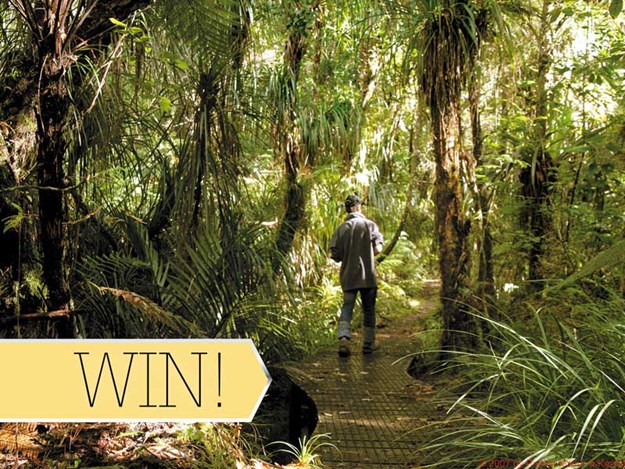
Ian and Barbara Candy of Adventure Puketi have kindly provided a daytime, night or ‘combo’ tour for two to give away.
To be in to win, enter here before 8 February.


